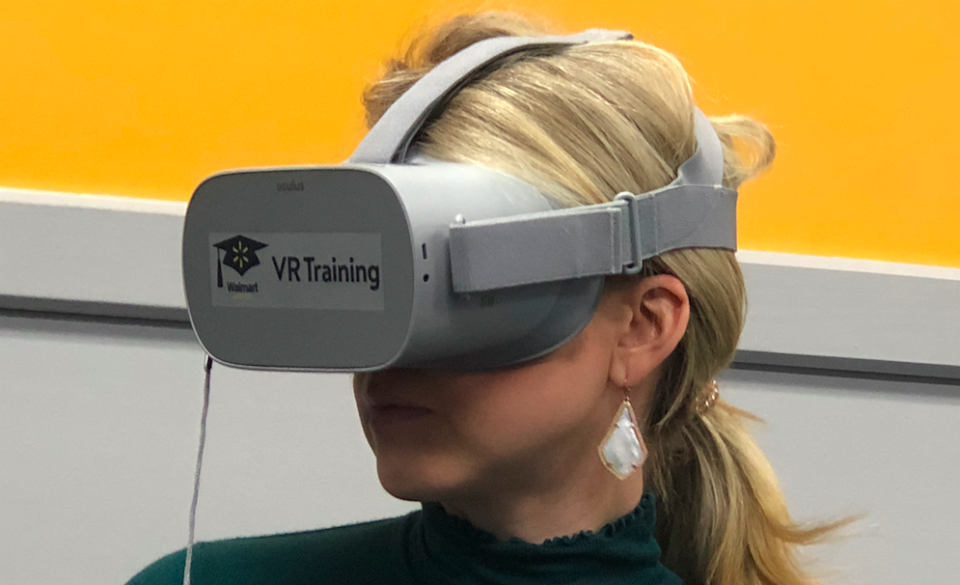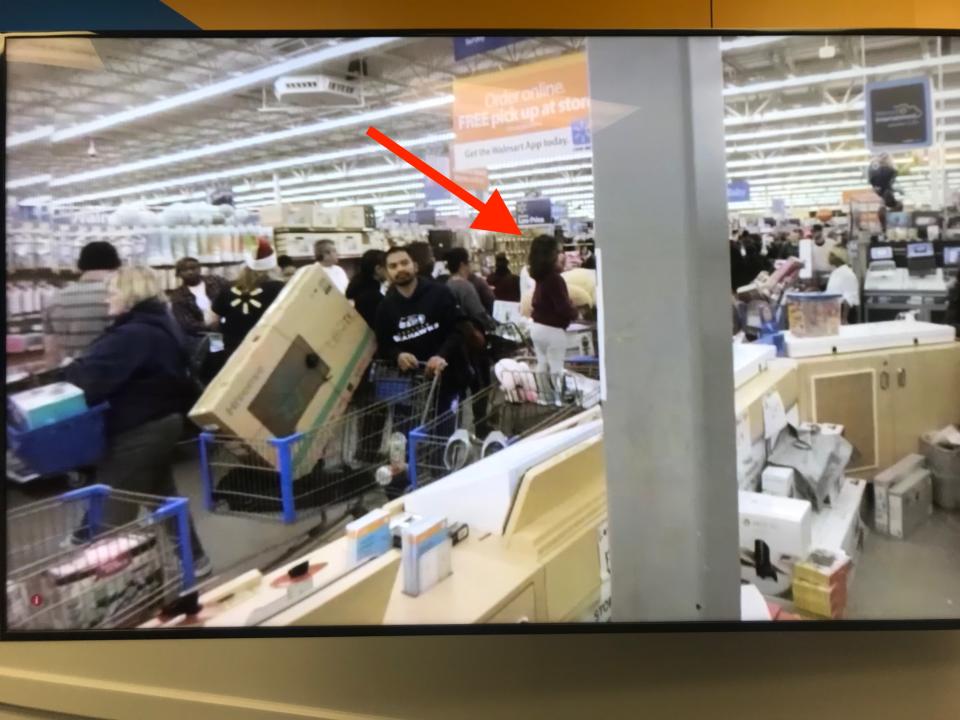I tried the new VR training that 1 million Walmart associates will go through this year
Walmart (WMT), the world’s largest retailer, is using the same virtual reality to train its store associates that a pro football quarterback might use for an on-the-field simulation.
Always in a search for new technologies, Brock McKeel, Walmart’s senior director of digital operations, had looked at virtual reality a few years ago, but the enterprise versions he came across weren’t great.
“We couldn’t figure out how you make this fit in a Walmart environment,” McKeel said. “But as I followed the technology, I kept seeing these stories about how it was working in football.”

He visited the football program at the nearby University of Arkansas in Fayetteville and witnessed the players using the VR technology.
“I saw the football players doing was good repetition in a safe environment with scenarios that you couldn’t create on the practice field, and the lightbulb went off.”
Walmart worked with STRIVR, a virtual reality company by college and professional football teams, to create various training scenarios for the retail environment.
In the last few weeks, close to 1,000 Walmart stores in the U.S. have received the Oculus Go virtual reality headsets with the STRIVR training. The rest of the chain, approximately 4,700 stores in all, will get their delivery by the end of the year.
All in, Walmart will have 17,000 units across its fleet, four for each supercenter and two for each neighborhood market or discount store. Approximately 1 million associates will undergo the new virtual reality training by the end of the year.
The idea to use virtual reality on a broader scale came out of Walmart’s Academy, the relatively new training program located in the back of 198 stores that teaches associates customer service skills, retail math, and how to use new technology.
“You process so much faster off of visual, and you retain a lot more off of visual because that’s how the brain receives images versus text. We really looked into that aspect and brought it in stores,” said Tim Peterson, a 21-year veteran at Walmart and senior manager for Academy Operations Support for the retailer.
“Holiday rush” virtual reality
Ahead of Black Friday, many associates will undergo the “Holiday rush” virtual reality module to go over customer service and safety “in an environment that cannot be reproduced.” That’s because the simulation is an actual Black Friday event that was filmed at one of the stores using a 360 camera behind the electronics counter.
“On all of our trainings, they’ll set up that camera wherever they want it and we’ll record live footage on how we’re not supposed to do things because it happens,” said Peterson.

In this simulation, the associates are immersed in the chaos of the Black Friday event, witnessing the large crowd in the busy electronics department. While in that environment, they’ll encounter various issues, including a safety issue of a small child standing and dancing in the seat of a shopping cart that’s unaccompanied (I missed that one!). They’ll also witness an associate offer poor directions to a customer by sending the shopper toward a giant teddy bear that isn’t visible on the screen.
“What a great way to get exposed to that crowd, to visibly see why we put the crowd control and the processes we do in place… Yeah, we can show you a video, but until you’re standing in that crowd and seeing all that happen doesn’t really come to life and resonate,” McKeel said.
One of the significant benefits of the Oculus Go headset is that associates won’t have to rely solely on the Academy for these programs. Instead, they can wear the Oculus Go to test out new technologies such as the Pick Up Tower in their own store. It also eliminates the need for teams to travel and coordinate large-scale training at these stores.
I didn’t pass
For this article, I tried the module for “Check Out With Me,” a new service, where associates will be positioned with handheld devices in some of the heaviest trafficked areas of the store, like the garden center or electronics department, allowing customers to purchase items in that department so they can bypass long lines at the register.
The virtual reality took me through an overview of the “Check Out With Me” equipment, the questions to ask customers, the departments where I should use the services (paint, fabrics, lawn, and fabrics), and then it tested me on different situations.
I have to admit — I didn’t pass my module. I clicked on a shopping cart with bananas.
“This was really meant for, ‘I’m buying a Christmas tree’ or ‘I’m buying a TV’ for that one item that’s hard to get somewhere, and that’s the only thing you’re going to get,” Peterson told me.
What I learned is that fresh produce needs to be weighed at a register and can’t be checked out on the spot. While that sounds silly, it stayed with me.
“Life is not 2-D video,” McKeel said. “Life is 360.”

—
Julia La Roche is a finance reporter at Yahoo Finance. Follow her on Twitter. Send tips to laroche@oath.com.

